Low FODMAP Florentines Bars are much easier to make than traditional, individual Florentine cookies, but have all the same crave-worthy ingredients: nuts, caramelized sugar, chocolate and dried and candied fruit.
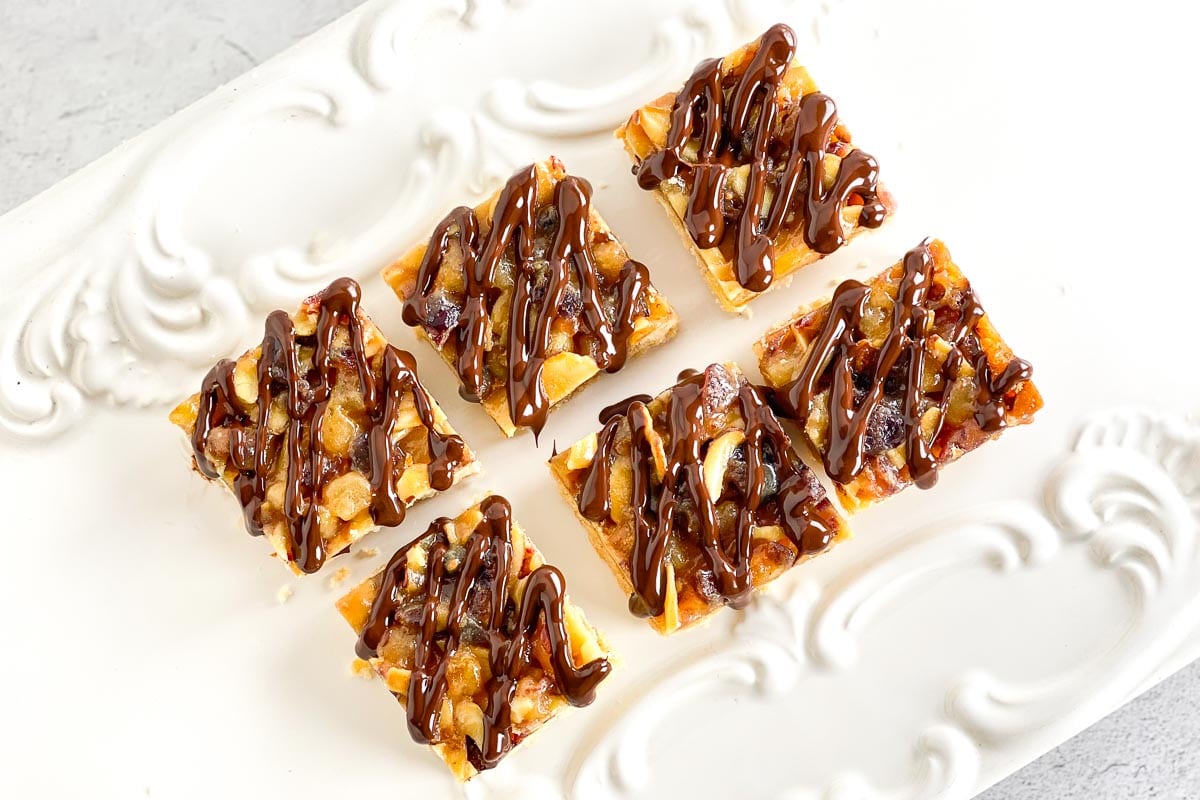
In this case we use almonds, dried cranberries and candied orange, all of which have lab tested low FODMAP amounts.
Cookies vs. Bars
Florentine cookies are my very favorite, however, their classic round shape is often hard to accomplish, due to their lacy, free-form nature. Here, the traditional cookie is used as a topping for a thin gluten-free shortbread, all of which is formed in a pan; easier to make and to serve but with all of the classic ingredients and flavors.
These bars are so fabulous, by the way, that it was rumored that fellow rivals thought I had bribed a dog show judge with them during a very high-level competition. “What an insult to the judge,” I exclaimed to a friend. “And,” she said, “what a compliment to your cookies!”
Looking for more bar ideas? Check out our 11 Brownies, Bars & Blondies For Gift Giving Collection!
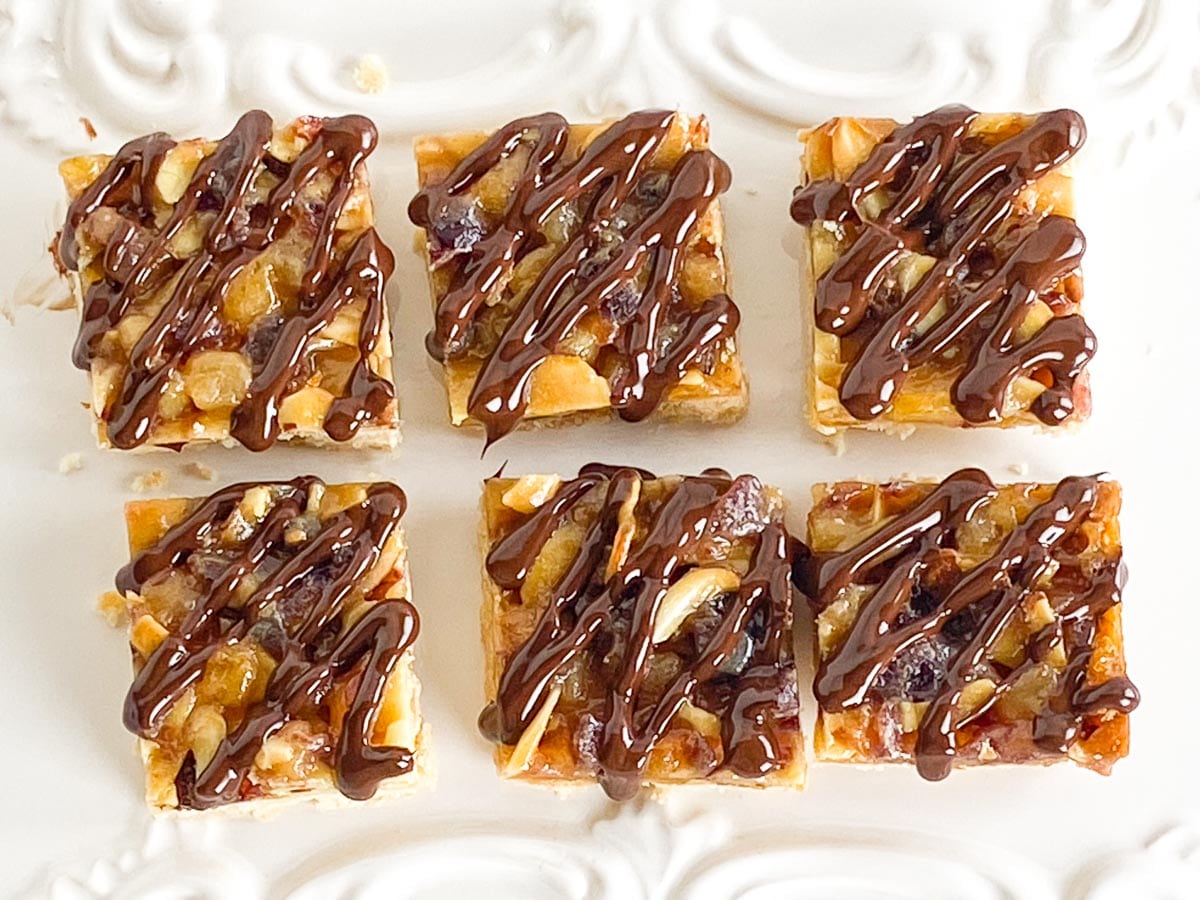
Florentine cookies are a lace style cookie, veering into confection territory. The batter is prepared in a pot on the stove, before it is baked in the oven, and always contains sugar, butter, cream and often a little honey and flour. Nuts, which are traditionally almonds or hazelnuts, are featured as well. Dried fruit often makes an appearance, with dried cherries and candied orange being popular. The bottoms are often coated with melted dark chocolate or sometimes two cookies are sandwiched with chocolate in-between.
The history of Florentines is not crystal clear, but it is believed that they are French in origin, dating to the 17th century. They do not hail from Italy.
Xanthan gum is low FODMAP and we have an article for you to read, which also discusses the low FODMAP nature of guar gum. The additional xanthan gum (there is already some in the flour blend) helps the shortbread stay together and prevents an overly crumbly texture.
Honey has been lab tested by Monash University, and while it does contain fructose, it is low FODMAP in 1 teaspoon amounts. Remember, the low FODMAP diet is not a “no FODMAP” diet! You can read more in our article, Is Honey Low FODMAP?
Both Monash University and FODMAP Friendly have lab tested cranberries. FODMAP Friendly has lab tested dried cranberries and gives them a “Fail” at 40 g or ⅜ cup. On the Monash app you will find Dried Cranberries are given a Green Light low FODMAP serving of 1 Australian tablespoon, or 15 g. On the Monash website itself they discuss fresh cranberries and state that 130 grams fresh, which is about a scant 1 ¼ cups, should be tolerated well.
The serving size of our bars are diet compliant, even for the Elimination Phase.
You can use conventional heavy cream, which is great for those of us in the U.S. as we do not have access to lactose-free heavy cream. The amount of heavy cream per serving is small enough to be considered low FODMAP.
You can read more in our article, All About Cream & FODMAPs.
I think chocolate adds to the overall experience of these Low FODMAP Florentines Bars. The one time I leave it out is if I am going to mail them as gifts. If packed well, unadorned, they are fairly sturdy.
You could also add some mini semisweet chocolate chips to the shortbread to sneak some chocolate in there. Try ¼ cup (56 g).
Below I show you how to pack them in a tin that I got at the dollar store. Line the tin with parchment and layer the bars in single layers separated by parchment. You want to nestle them together so that they have very little wiggle room.
Making Low FODMAP Florentine Bars
For the Shortbread: Position a rack in the middle of the oven. Preheat the oven to 350°F (180°C). Coat a 13-inch by 9-inch (33 cm by 23 cm) pan with non-stick spray, line the bottom with parchment, then spray the parchment.
Whisk the flour, salt and xanthan gum together in a small bowl to aerate and combine; set aside.
In the bowl of a stand mixer, beat the butter with the flat paddle attachment on medium-high speed until creamy, about 2 minutes. Add the sugar and continue to beat until very light and fluffy, about 3 minutes more. Beat in the vanilla.
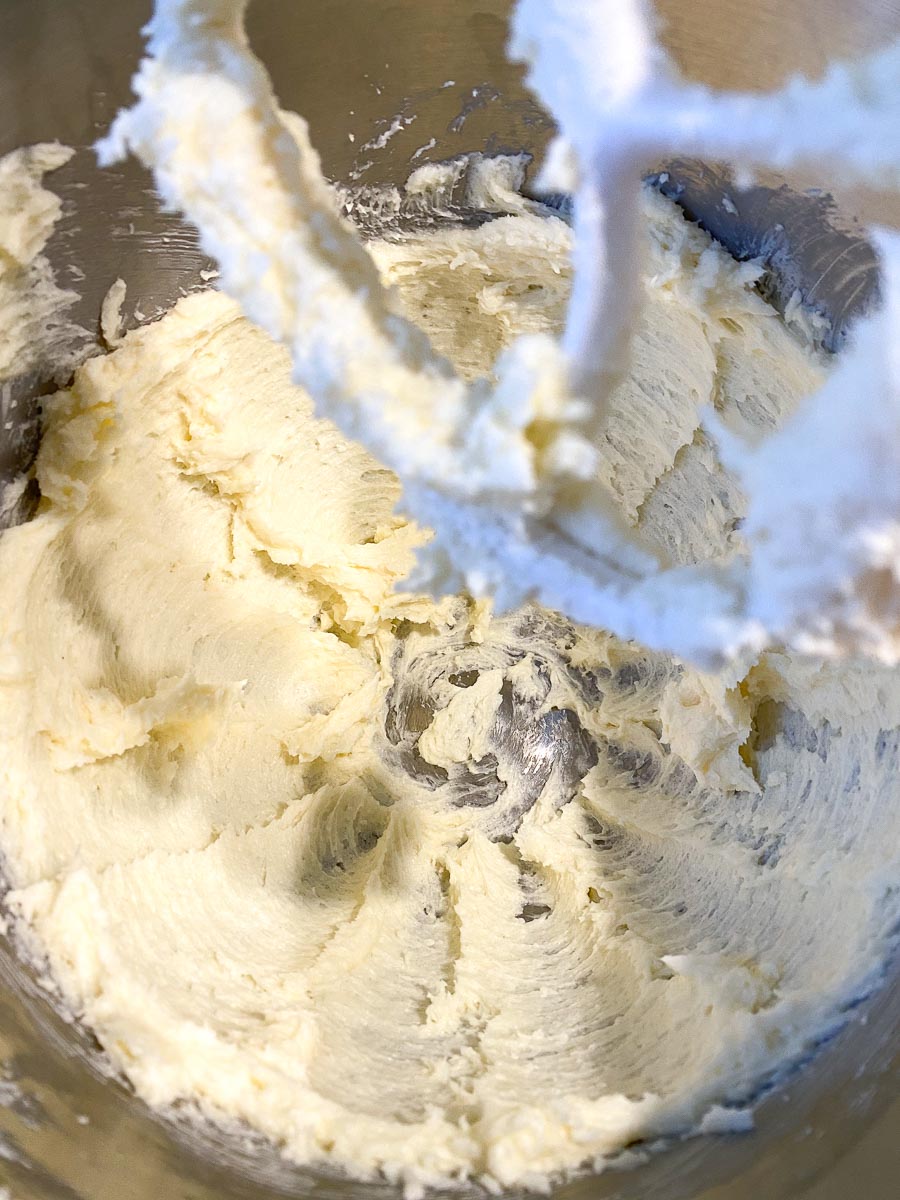
Gradually add the flour.
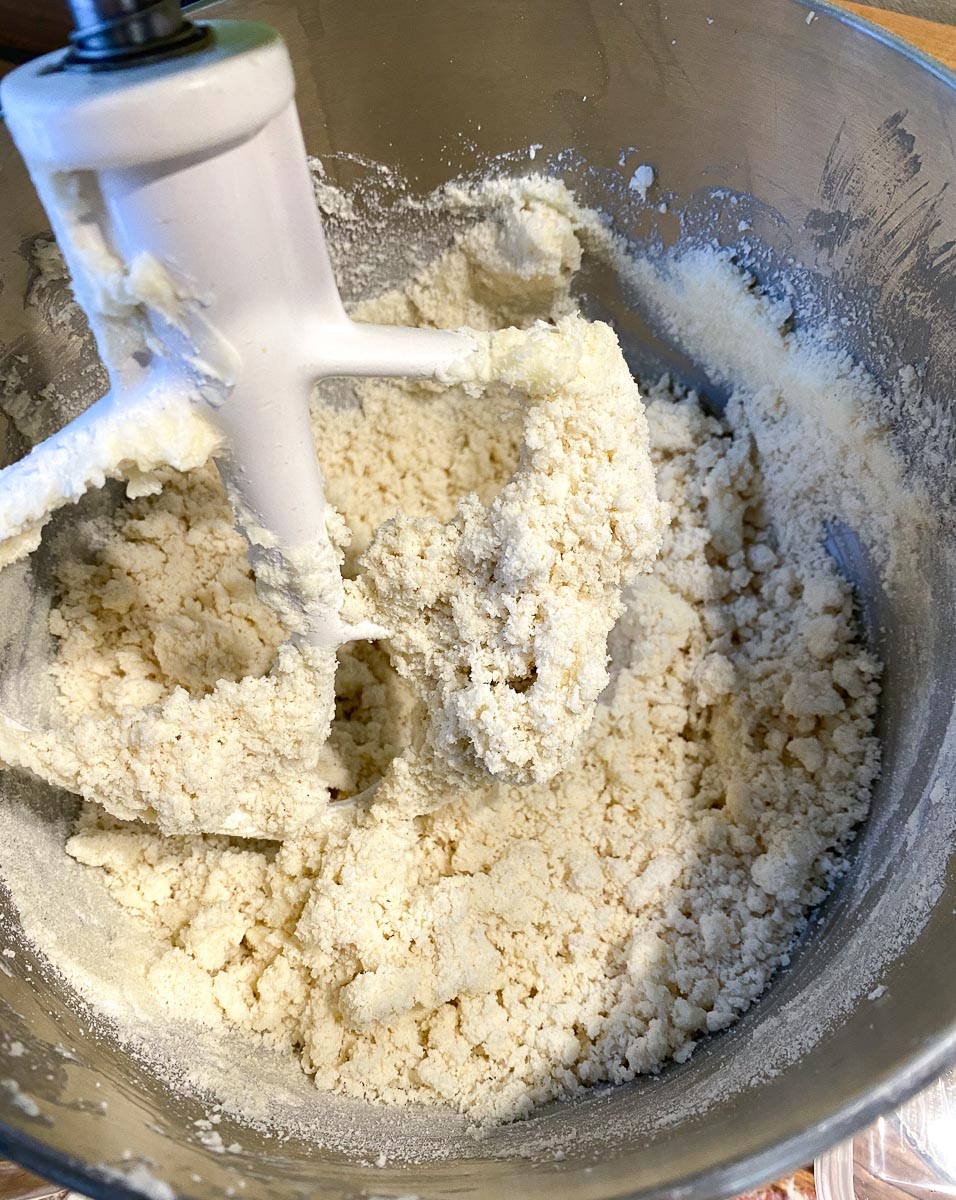
Blend in until blended, scraping down the bowl once or twice.
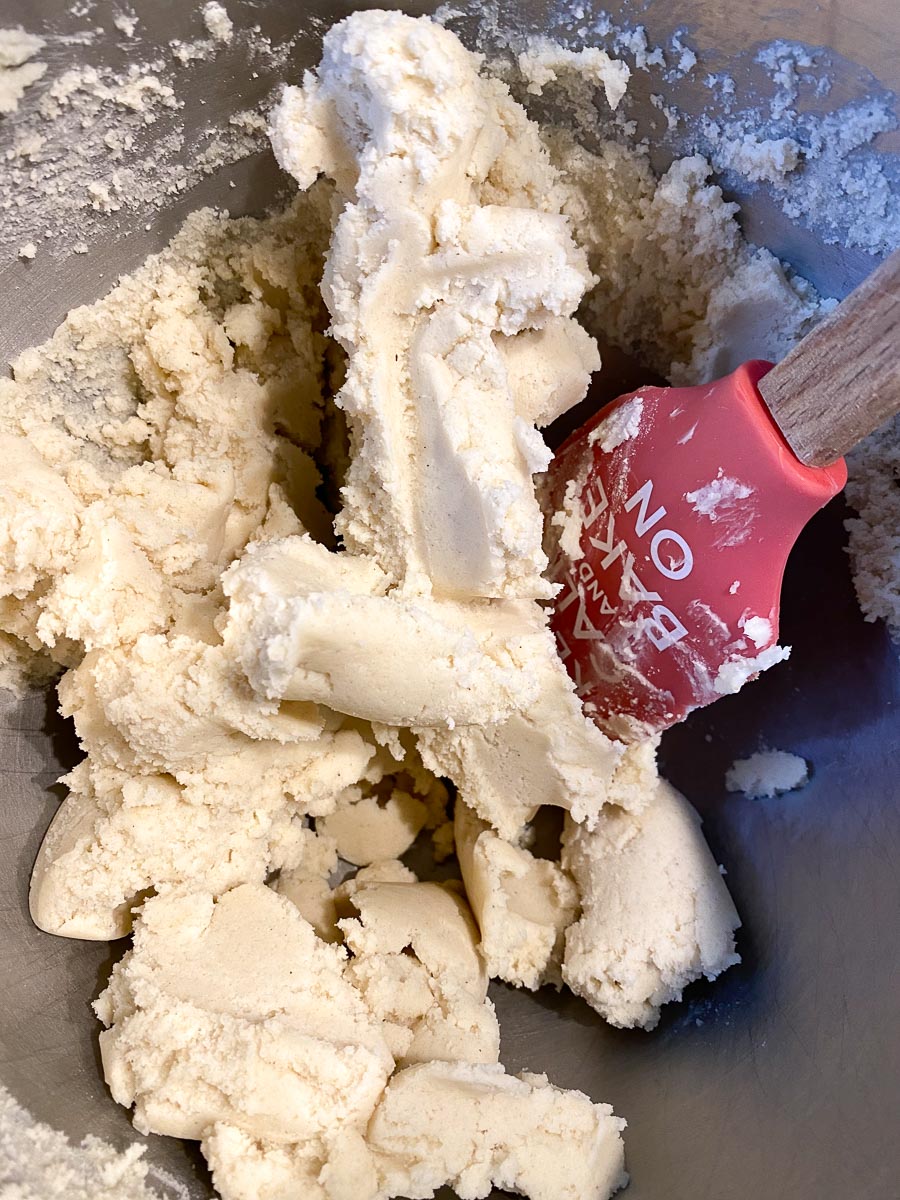
Pat the crust into an even layer in the prepared pan.
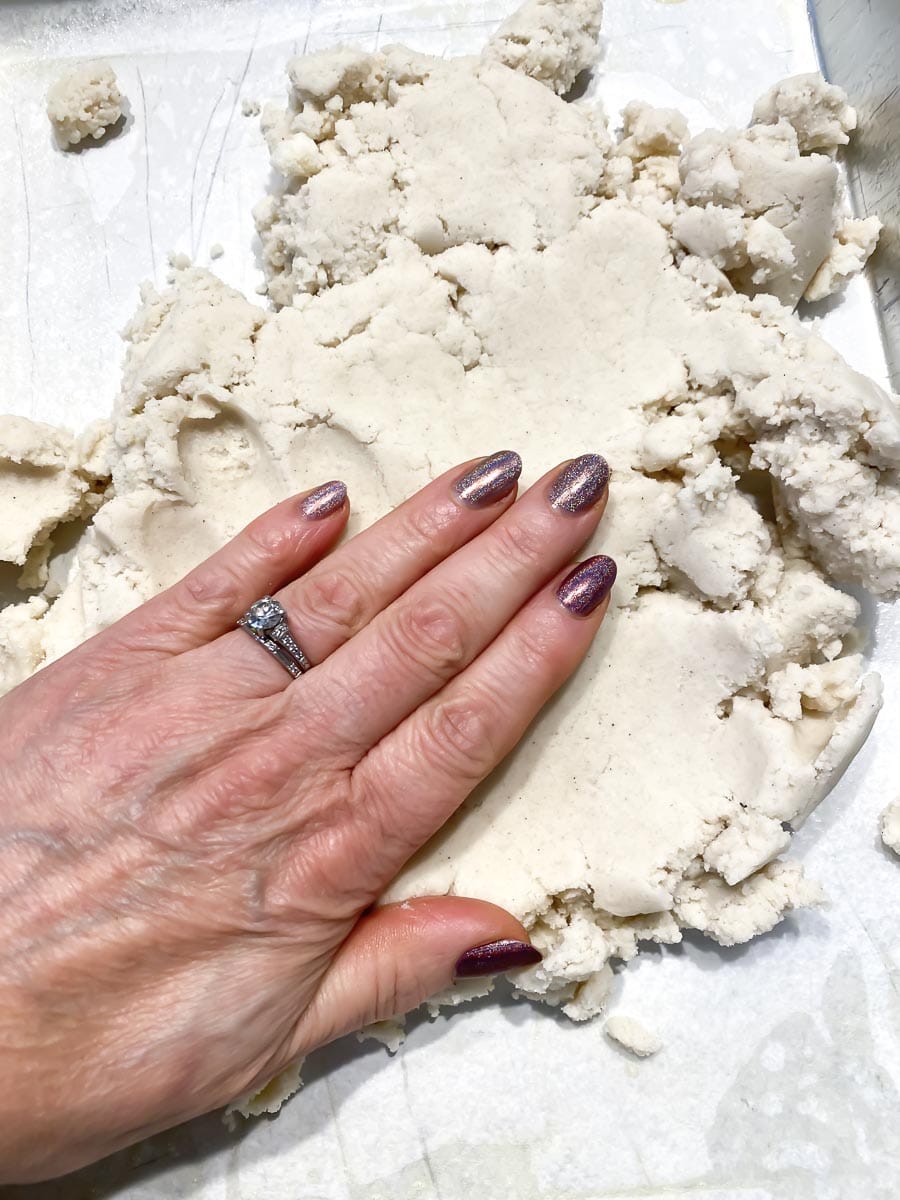
Keep going until you have an even layer, edge to edge.
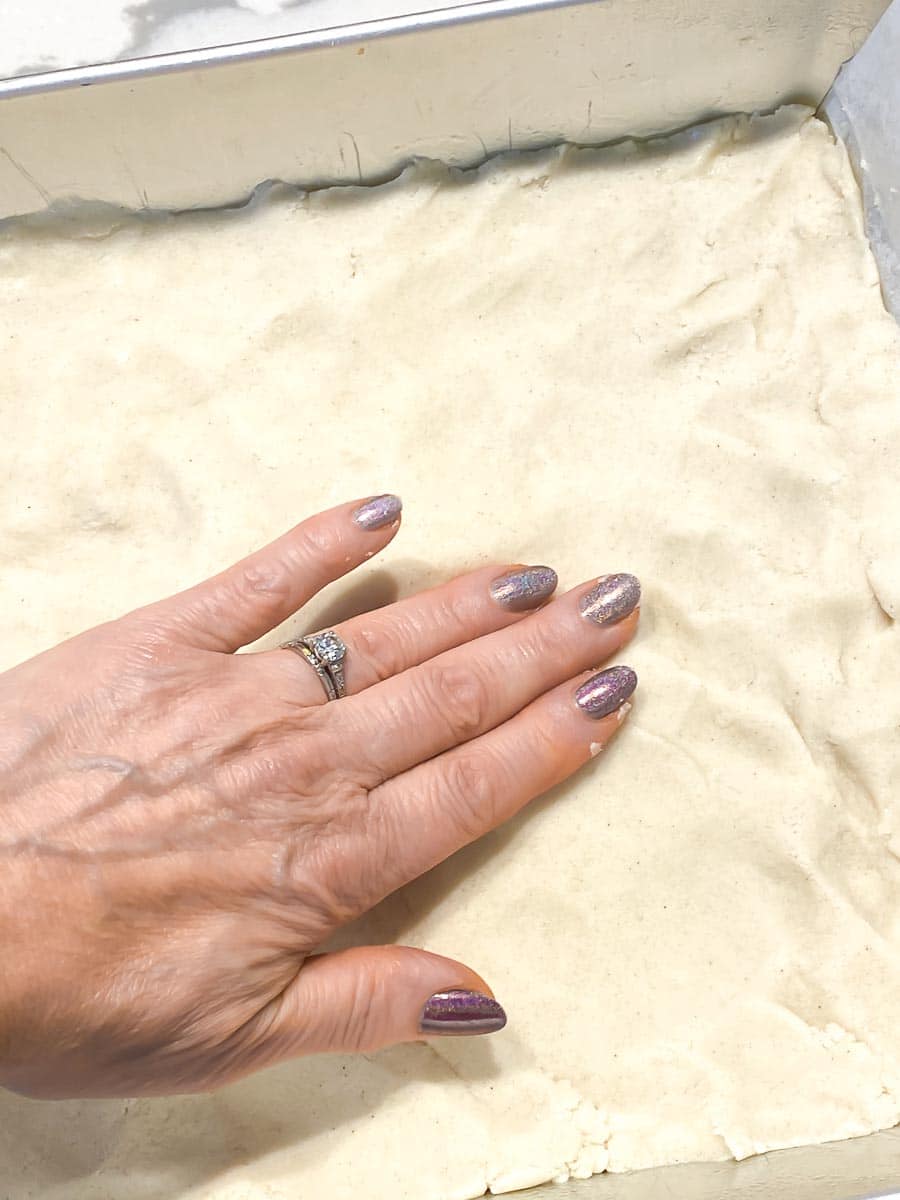
Pierce in several places with a fork.
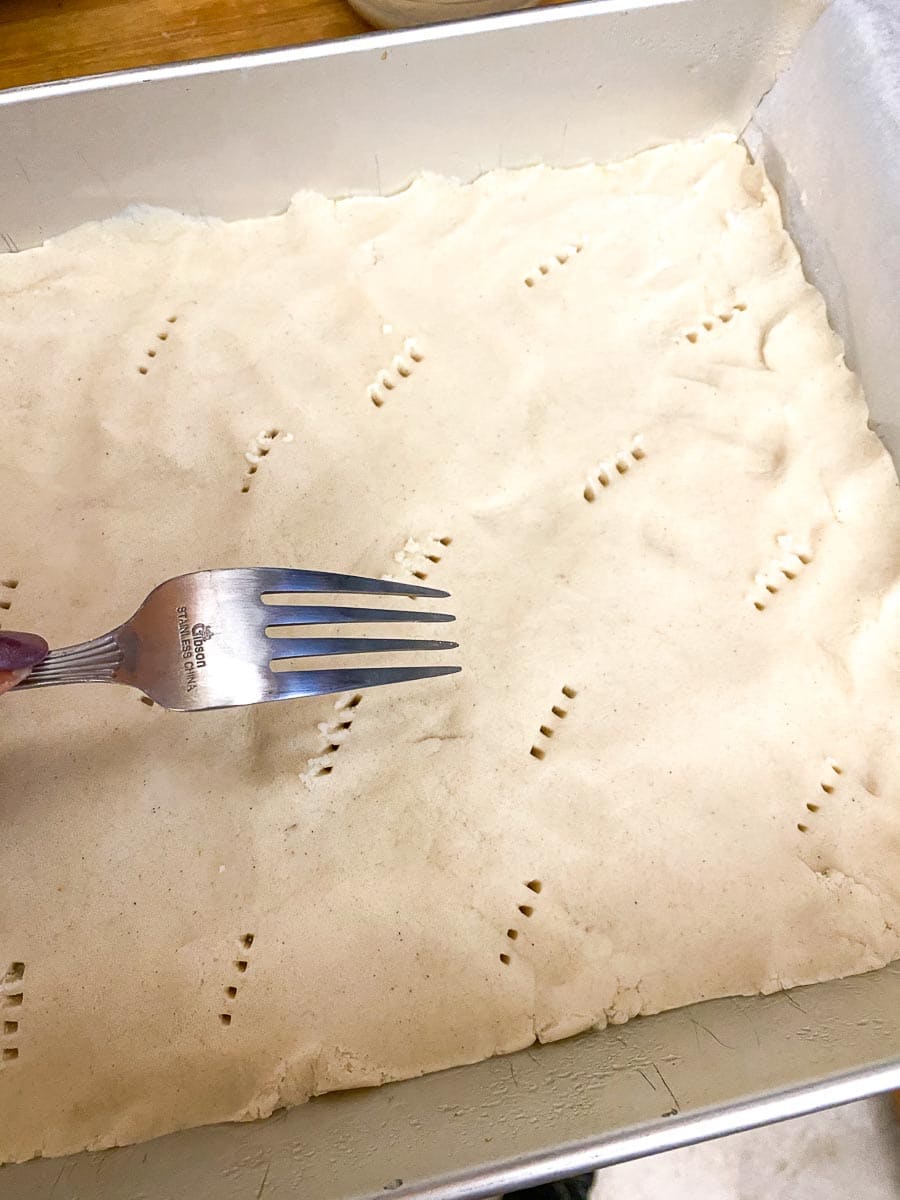
Bake the crust for 20 to 25 minutes or until just beginning to turn very light golden brown along the edges; it should be dry to the touch.
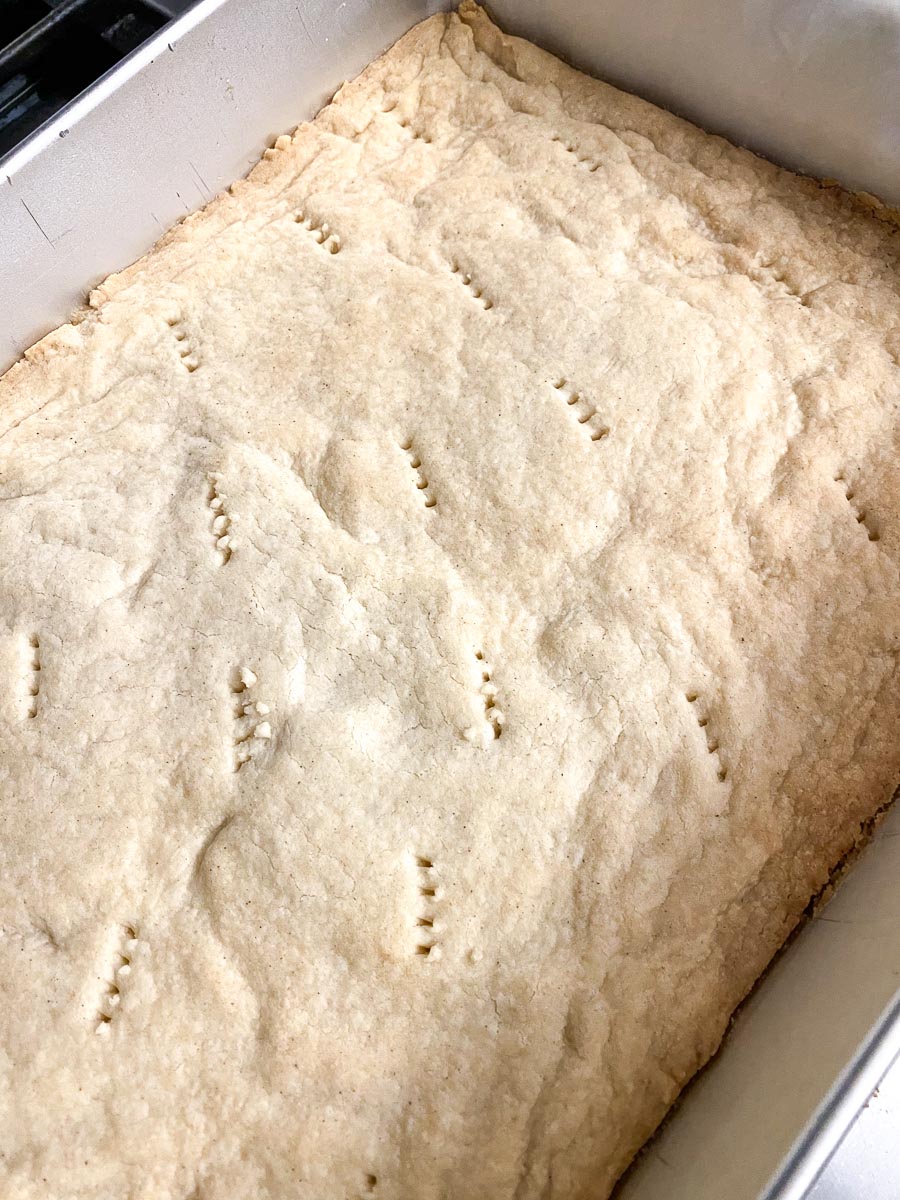
Prepare the filling while the crust is baking.
For the Filling: Put the butter, sugar, cream, and honey in a medium sized saucepan, attach a candy thermometer, and cook over medium heat, stirring occasionally, until the butter melts. Turn the heat to medium-high, bring to a boil, and cook to 235°F (113°C).
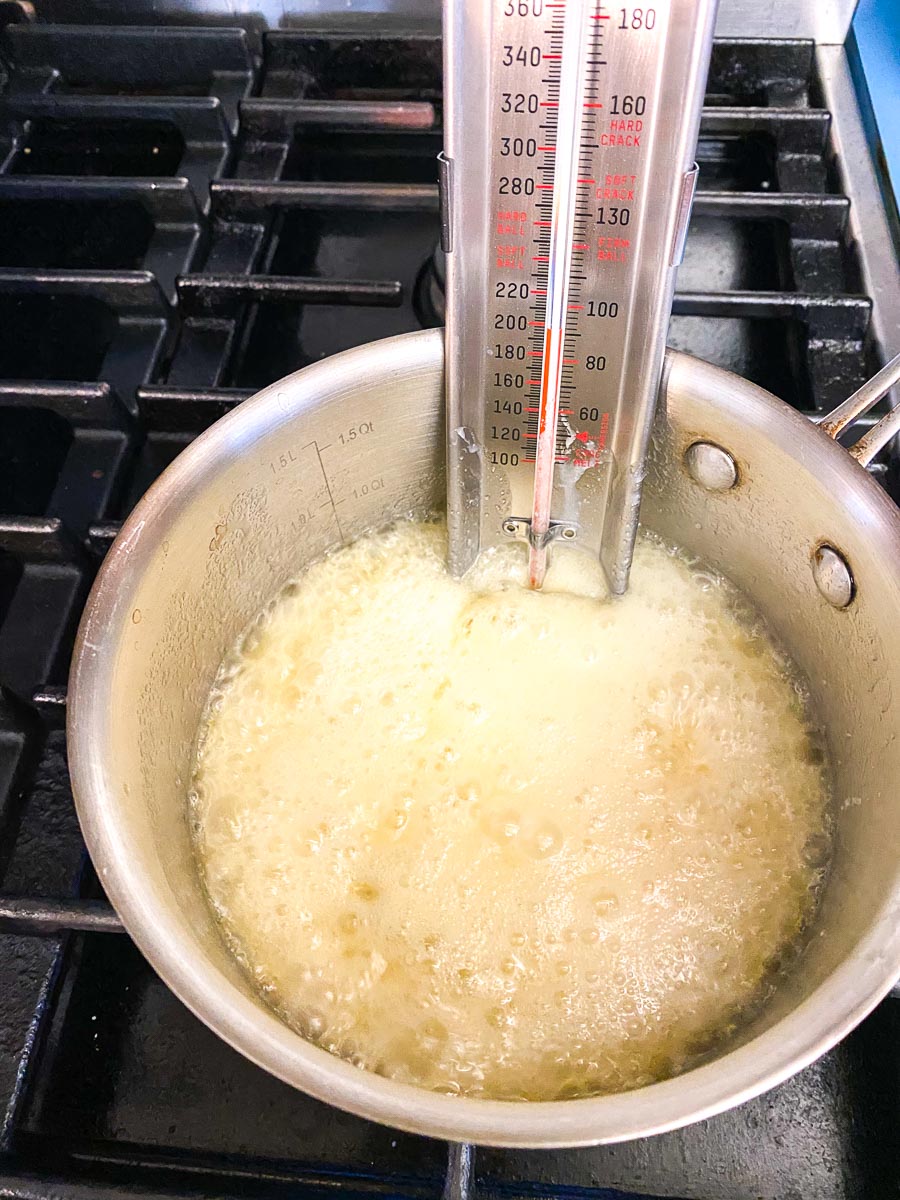
The mixture will have thickened and the surface will be covered with large bubbles. Remove from the heat.
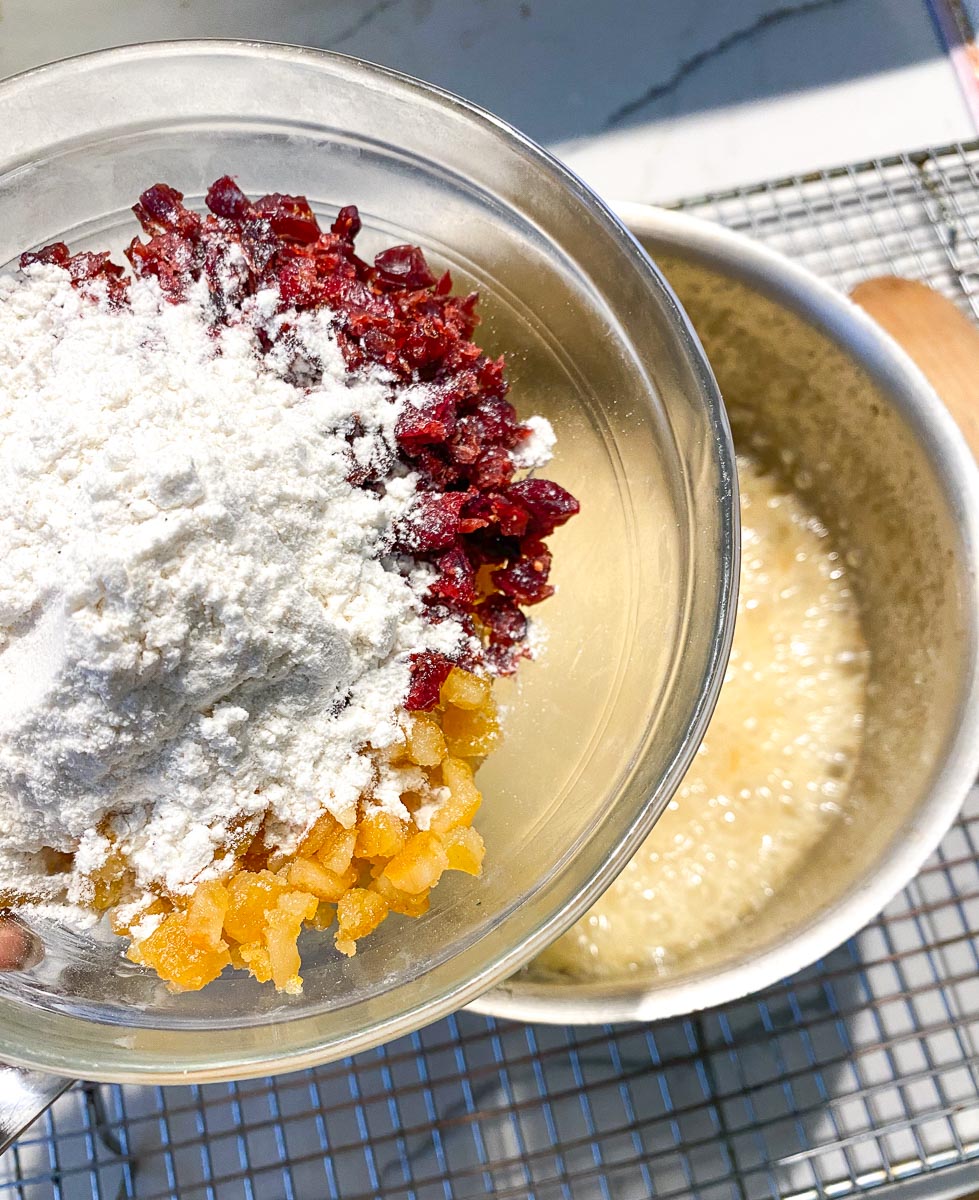
Stir in the nuts, fruit, and flour until well combined.
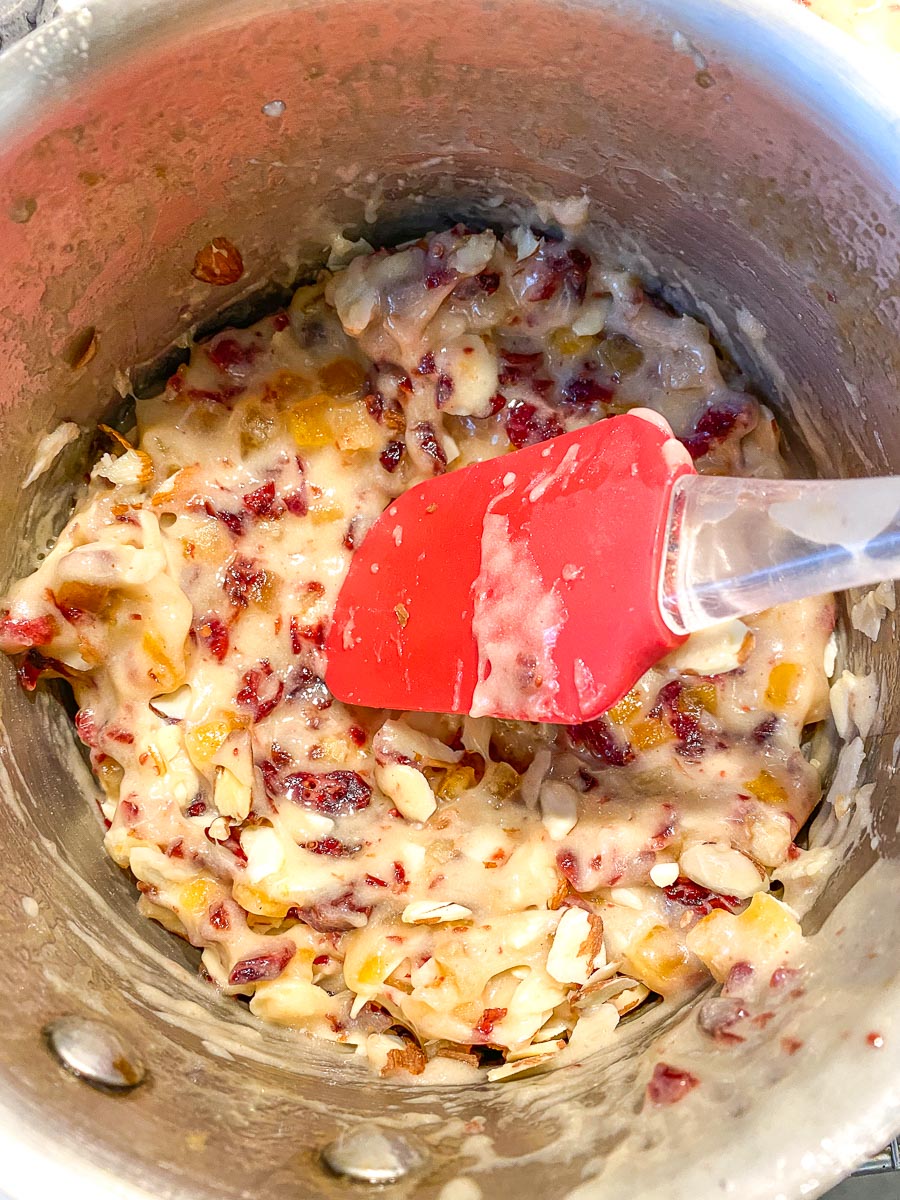
Pour the filling over the partially baked crust and spread into an even layer.
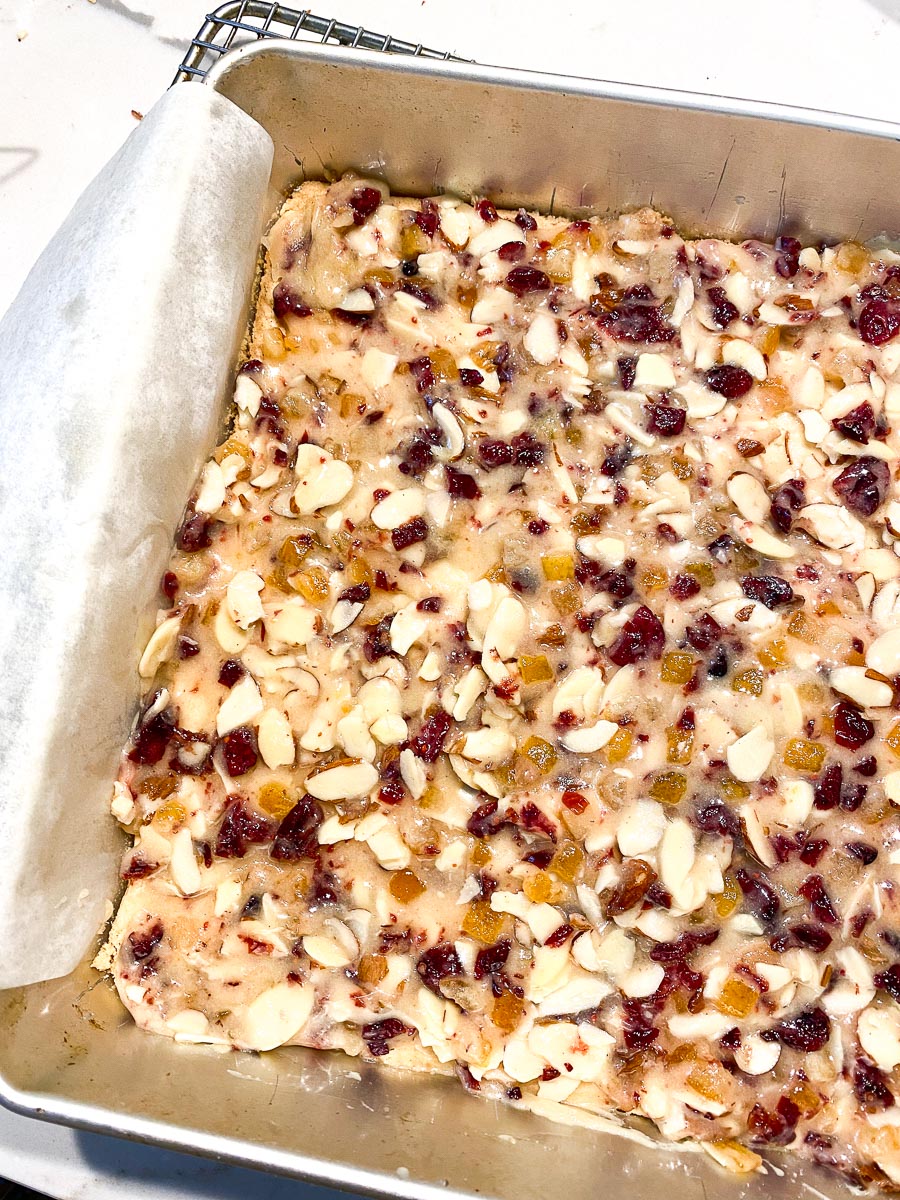
Bake for another 20 to 25 minutes or until the filling is bubbling and has turned light golden brown all over. The color might be darker around the edges. Cool completely in the pan set on a rack.
Loosen the entire shebang from the pan. I like to use a bench scraper.
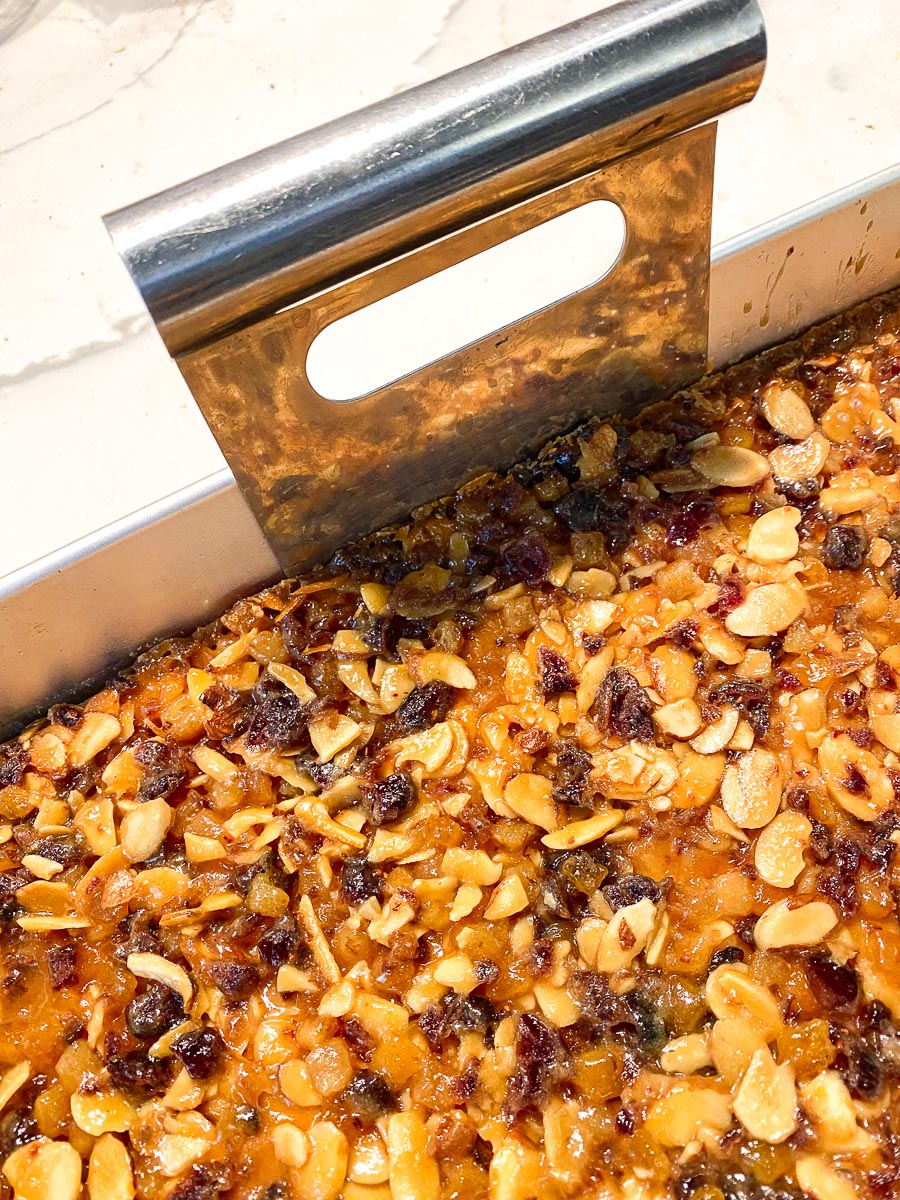
Then use the overhanging parchment to pull the bars up and out of the pan.
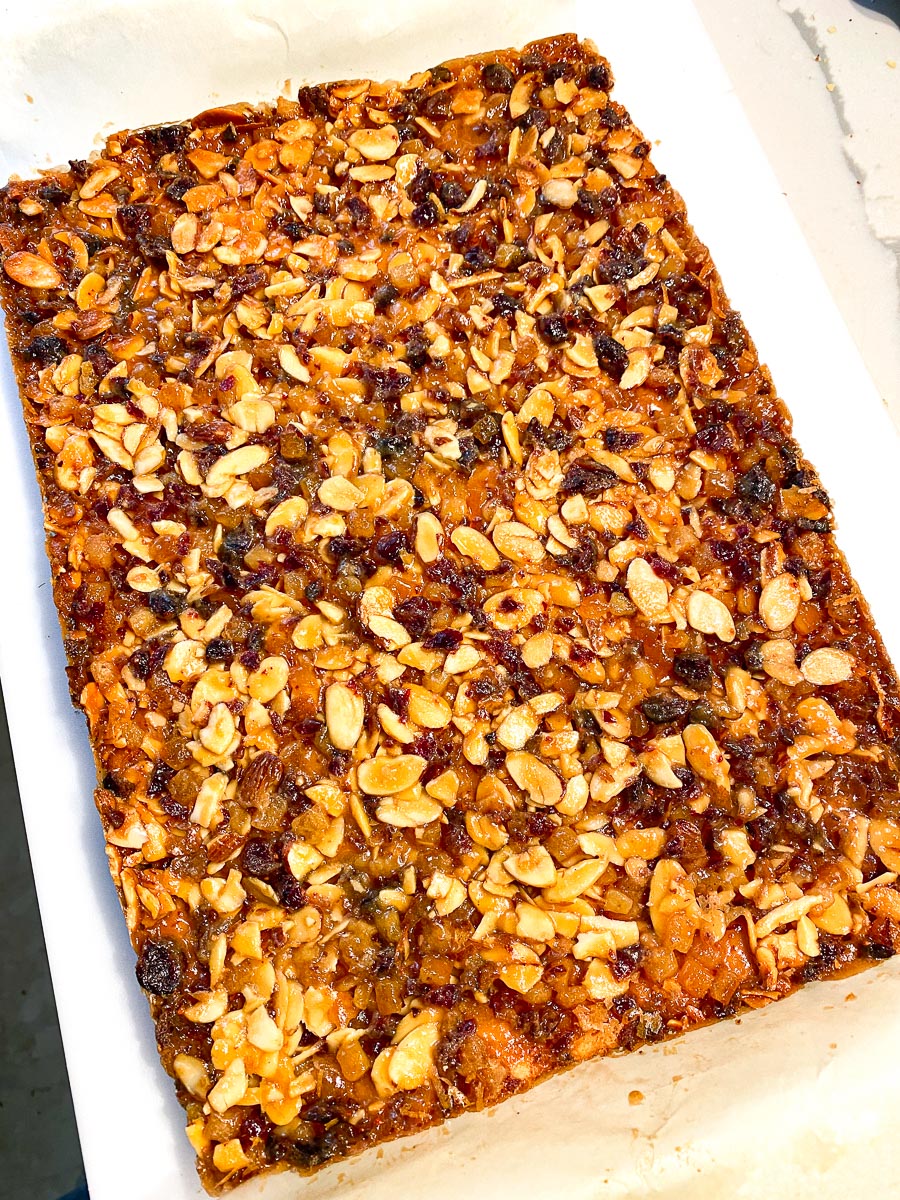
Cut into 40 bars (5 x 8).
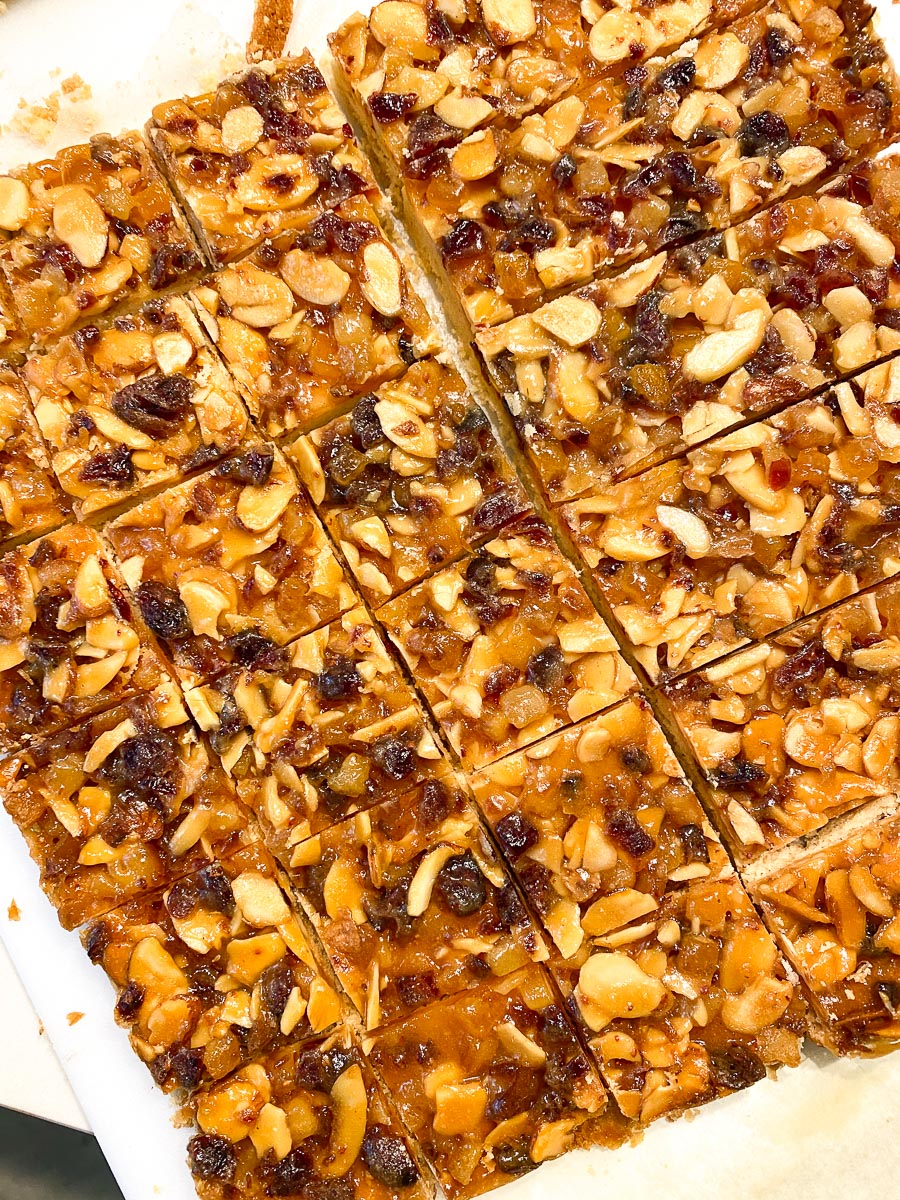
For the Topping: Put the melted chocolate in a parchment cone and make a free-form zigzag pattern all over the bars.
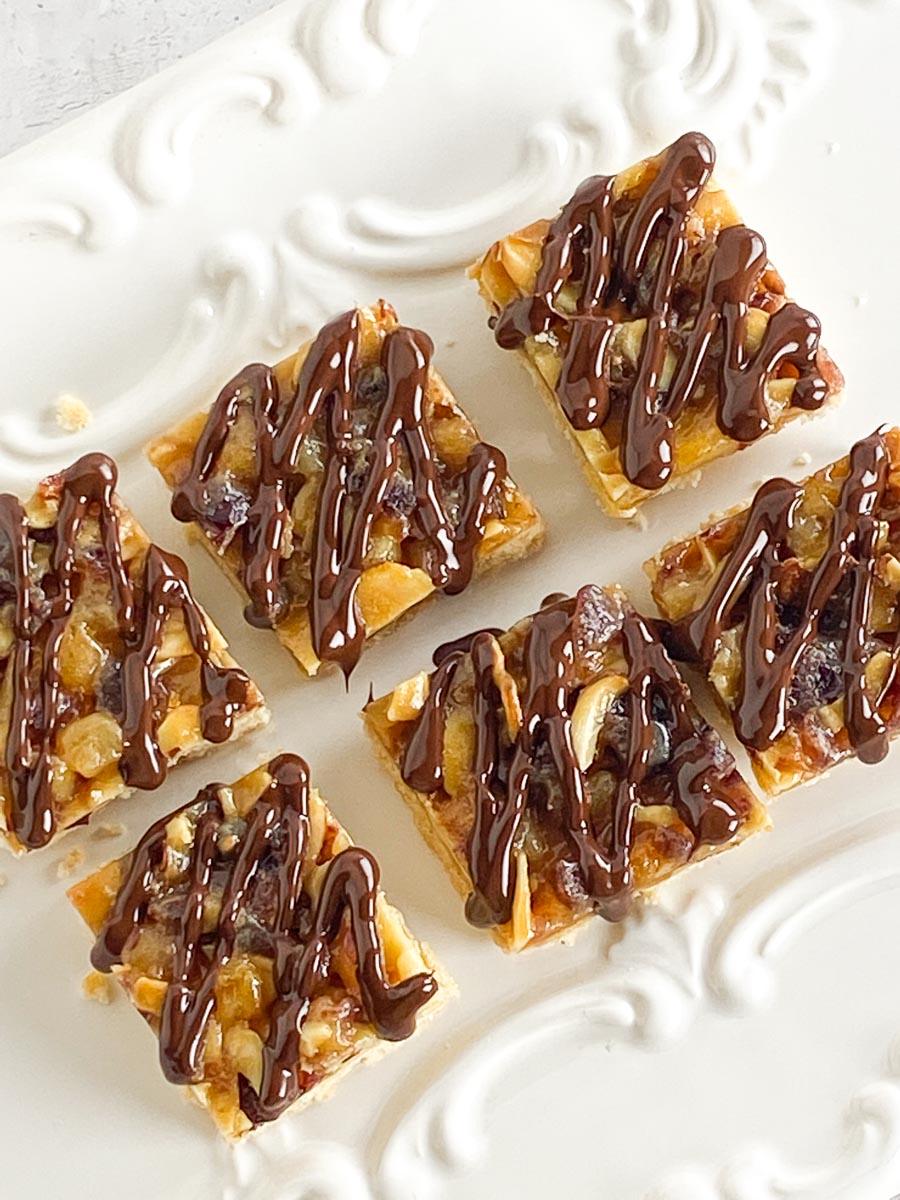
Chill to set the chocolate. Florentines are ready to serve. Refrigerate for up to 1 week in an airtight container in single layers separated by parchment paper. Bring to room temperature before serving. Do not serve to judges of any sort, ever.
FODMAP Information
Our recipes are based on Monash University and FODMAP Friendly science.
- Almonds: Both Monash University and FODMAP Friendly have lab tested whole almonds, and their results vary from one another. Monash says that a Green Light low FODMAP portion is 10 whole almonds at 12 g, but a high FODMAP portion is 20 whole almonds at 24 g. FODMAP Friendly gives them a “Pass” at 30 g or ¼ cup.
- Butter: Both Monash University and FODMAP Friendly have lab tested butter. Monash states that a low FODMAP Green Light portion is 1 tablespoon or 19 g and also states that “butter is high in fat and does not contain carbohydrates (FODMAPs)”. FODMAP Friendly gives it a “Pass” at 1 tablespoon or 19 g. Both recommended serving sizes are presented as part of healthy eating guidelines, not as maximum FODMAP serving size. Fat can affect guy motility and trigger IBS symptoms in some people. Eat to your tolerance.
- Chocolate: Monash University has lab tested dark, milk and white chocolate all have low FODMAP amounts: 85% dark at 20 g; dark at 30 g; milk at 20 g; white at 25 g.
- Cranberries: Both Monash University and FODMAP Friendly have lab tested cranberries. FODMAP Friendly has lab tested dried cranberries and gives them a “Fail” at 40 g or ⅜ cup. On the Monash app you will find Dried Cranberries are given a Green Light low FODMAP serving of 1 Australian tablespoon, or 15 g. On the Monash website itself they discuss fresh cranberries and state that 130 grams fresh, which is about a scant 1 ¼ cups, should be tolerated well.
- Dairy: The low FODMAP diet is not a dairy-free diet. It is however, low in lactose. Many dairy ingredients are low in lactose, such as heavy cream and many cheeses.
- Honey: Honey has been lab tested by both FODMAP Friendly and Monash University. FODMAP Friendly gives it a “Fail” at 2 teaspoons (15 g). Monash says that while clover honey specifically is only low FODMAP at ½ teaspoon (3 g), they state that honey is low FODMAP in 1 teaspoon (7 g) amounts.
- Sugar: Monash University and FODMAP Friendly have both lab tested white, granulated sugar. Monash states that a Green Light low FODMAP serving size of white sugar is ¼ cup (50 g). FODMAP Friendly simply states that they have tested 1 tablespoon and that it is low FODMAP. Regular granulated white sugar is sucrose, which is a disaccharide made up of equal parts glucose and fructose. Sucrose is broken down and absorbed efficiently in the small intestine.
Please always refer to the Monash University & FODMAP Friendly smartphone apps for the most up-to-date lab tested information. As always, your tolerance is what counts; please eat accordingly. The ultimate goal of the low FODMAP diet is to eat as broadly as possible, without triggering symptoms, for the healthiest microbiome.
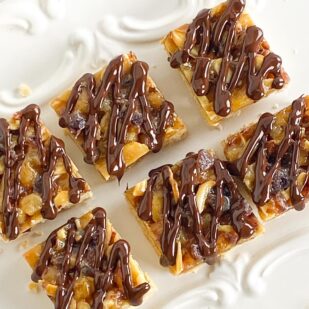
Low FODMAP Florentines Bars with Candied Orange and Cranberries
Low FODMAP Florentines Bars are much easier to make than traditional, individual Florentine cookies, but have all the same crave-worthy ingredients: nuts, caramelized sugar, chocolate and dried and candied fruit. In this case we use almonds, dried cranberries and candied orange, all of which have lab tested low FODMAP amounts.
Low FODMAP Serving Size Info: Makes 40 squares; 40 servings; 1 square per serving
Ingredients:
Shortbread:
- 2 cups (290 g) plus 2 tablespoons low FODMAP gluten-free all-purpose flour, such as Bob’s Red Mill 1 to 1 Gluten Free Baking Flour
- 1/4 teaspoon salt
- 1/8 teaspoon xanthan gum
- 1 cup (2 sticks; 226 g) unsalted butter, at room temperature, cut into pieces
- 1/2 cup (99 g) sugar
- ½ teaspoon vanilla extract
Florentine Filling:
- 6 tablespoons (¾ stick; 85 g) unsalted butter, at room temperature, cut into pieces
- 2/3 cup (131 g) sugar
- 1/3 cup (75 ml) heavy cream, conventional or lactose-free
- 3 tablespoons honey
- 1 cup (86 g) sliced blanched almonds
- ½ cup (80 g) dried cranberries, chopped
- ½ cup (60 g) diced candied orange peel
- ¼ cup (36 g) low FODMAP gluten-free all-purpose flour, such as Bob’s Red Mill 1 to 1 Gluten Free Baking Flour
Topping:
- 2- ounces (55 g) semisweet or bittersweet chocolate, melted, preferably around 60% to 65% cacao
Preparation:
-
For the Shortbread: Position a rack in the middle of the oven. Preheat the oven to 350°F (180°C). Coat a 13-inch by 9-inch (33 cm by 23 cm) pan with non-stick spray, line the bottom with parchment, then spray the parchment.
-
Whisk the flour, salt and xanthan gum together in a small bowl to aerate and combine; set aside.
-
In the bowl of a stand mixer, beat the butter with the flat paddle attachment on medium-high speed until creamy, about 2 minutes. Add the sugar and continue to beat until very light and fluffy, about 3 minutes more. Beat in the vanilla. Gradually add the flour, mixing just until blended, scraping down the bowl once or twice. Pat the crust into an even layer in the prepared pan. Pierce in several places with a fork.
-
Bake the crust for 20 to 25 minutes or until just beginning to turn very light golden brown along the edges; it should be dry to the touch. Prepare the filling while the crust is baking.
-
For the Filling: Put the butter, sugar, cream, and honey in a medium sized saucepan, attach a candy thermometer, and cook over medium heat, stirring occasionally, until the butter melts. Turn the heat to medium-high, bring to a boil, and cook to 235°F (113°C). The mixture will have thickened and the surface will be covered with large bubbles. Remove from the heat and stir in the nuts, fruit, and flour until well combined.
-
Pour the filling over the partially baked crust and spread into an even layer. Bake for another 20 to 25 minutes or until the filling is bubbling and has turned light golden brown all over. The color might be darker around the edges. Cool completely in the pan set on a rack.
-
Loosen the entire shebang from the pan. I like to use a bench scraper. Then use the overhanging parchment to pull the bars up and out of the pan. Cut into 40 bars (5 x 8).
-
For the Topping: Put the melted chocolate in a parchment cone and make a free-form zigzag pattern all over the bars. Chill to set the chocolate. Florentines are ready to serve. Refrigerate for up to 1 week in an airtight container in single layers separated by parchment paper. Bring to room temperature before serving. Do not serve to judges of any sort, ever.
Notes:
FODMAP Information
Our recipes are based on Monash University and FODMAP Friendly science.
• Almonds: Both Monash University and FODMAP Friendly have lab tested whole almonds, and their results vary from one another. Monash says that a Green Light low FODMAP portion is 10 whole almonds at 12 g, but a high FODMAP portion is 20 whole almonds at 24 g. FODMAP Friendly gives them a “Pass” at 30 g or ¼ cup.
• Butter: Both Monash University and FODMAP Friendly have lab tested butter. Monash states that a low FODMAP Green Light portion is 1 tablespoon or 19 g and also states that “butter is high in fat and does not contain carbohydrates (FODMAPs)”. FODMAP Friendly gives it a “Pass” at 1 tablespoon or 19 g. Both recommended serving sizes are presented as part of healthy eating guidelines, not as maximum FODMAP serving size. Fat can affect guy motility and trigger IBS symptoms in some people. Eat to your tolerance.
• Chocolate: Monash University has lab tested dark, milk and white chocolate all have low FODMAP amounts: 85% dark at 20 g; dark at 30 g; milk at 20 g; white at 25 g.
• Cranberries: Both Monash University and FODMAP Friendly have lab tested cranberries. FODMAP Friendly has lab tested dried cranberries and gives them a “Fail” at 40 g or ⅜ cup. On the Monash app you will find Dried Cranberries are given a Green Light low FODMAP serving of 1 Australian tablespoon, or 15 g. On the Monash website itself they discuss fresh cranberries and state that 130 grams fresh, which is about a scant 1 ¼ cups, should be tolerated well.
• Dairy: The low FODMAP diet is not a dairy-free diet. It is however, low in lactose. Many dairy ingredients are low in lactose, such as heavy cream and many cheeses.
• Honey: Honey has been lab tested by both FODMAP Friendly and Monash University. FODMAP Friendly gives it a “Fail” at 2 teaspoons (15 g). Monash says that while clover honey specifically is only low FODMAP at ½ teaspoon (3 g), they state that honey is low FODMAP in 1 teaspoon (7 g) amounts.
• Sugar: Monash University and FODMAP Friendly have both lab tested white, granulated sugar. Monash states that a Green Light low FODMAP serving size of white sugar is ¼ cup (50 g). FODMAP Friendly simply states that they have tested 1 tablespoon and that it is low FODMAP. Regular granulated white sugar is sucrose, which is a disaccharide made up of equal parts glucose and fructose. Sucrose is broken down and absorbed efficiently in the small intestine.
Please always refer to the Monash University & FODMAP Friendly smartphone apps for the most up-to-date lab tested information. As always, your tolerance is what counts; please eat accordingly. The ultimate goal of the low FODMAP diet is to eat as broadly as possible, without triggering symptoms, for the healthiest microbiome.
Nutrition
All nutritional information is based on third-party calculations and should be considered estimates. Actual nutritional content will vary with brands used, measuring methods, portion sizes and more. For a more detailed explanation, please read our article Understanding The Nutrition Panel Within Our Recipes.
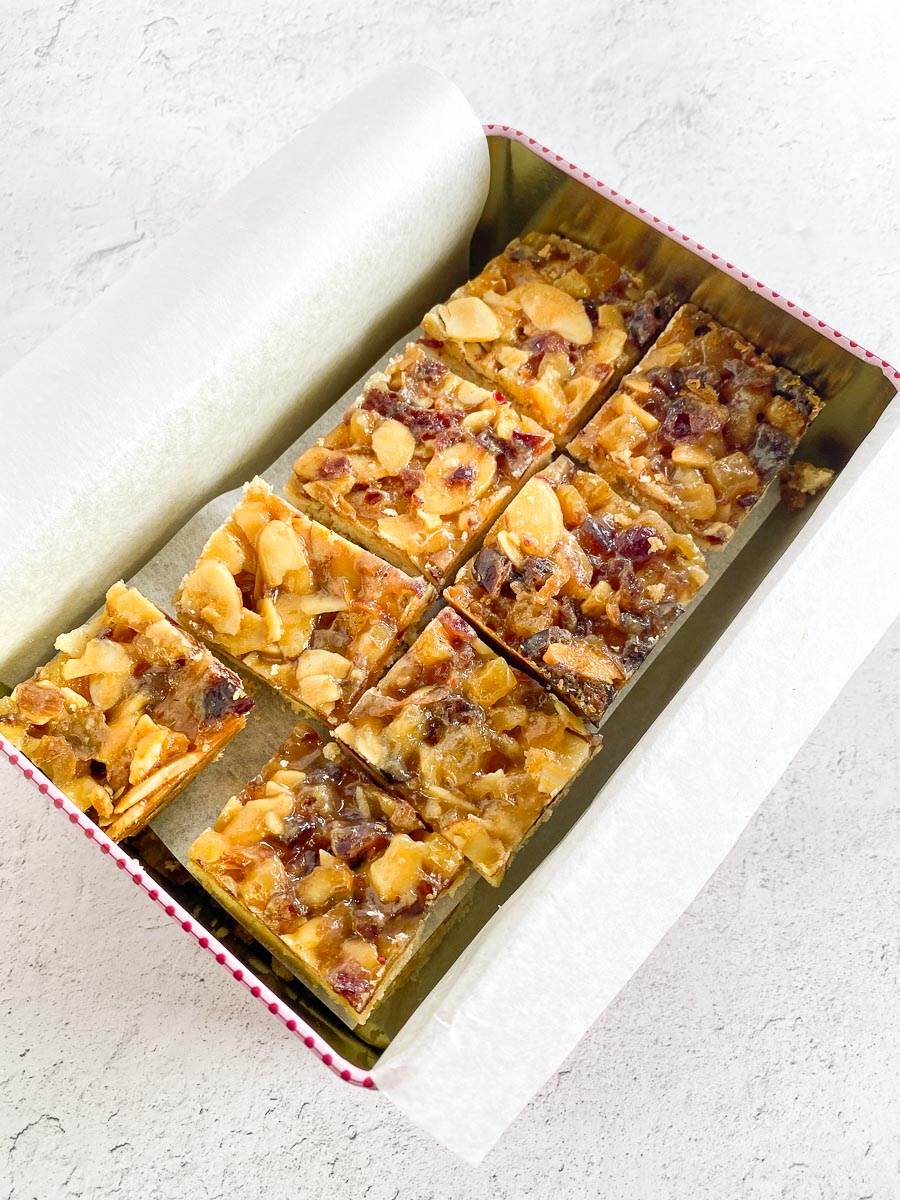
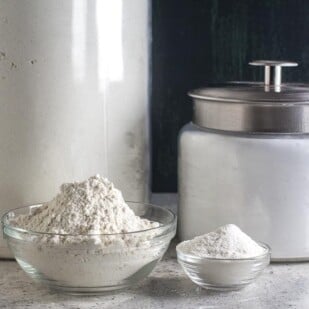
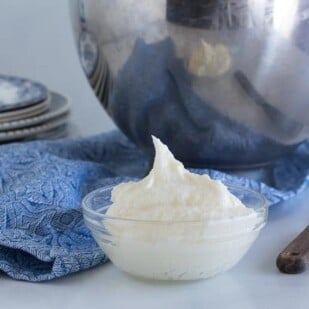




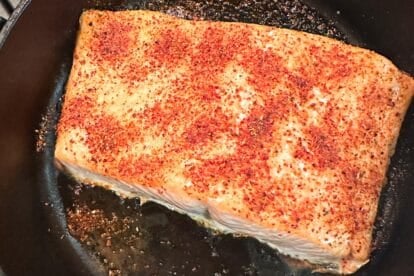
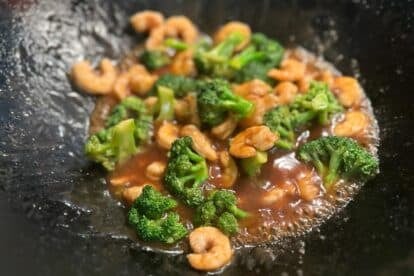
This looks delicious! I’d love to make it, but I’m having trouble finding candied orange peel (could only find mixed orange, lemon and citron peel). Do you think a little orange zest might work? Or candying my own orange peel?
Are you in the US? It is fairly easy to find via mail-order. The candied mix your mention could work texture wise, but obviously flavor would not be the same AND citron has not been tested for FODMAPs. Iff you are stable and in your Challenge phase I would say try this AND add some grated orange zest for the orange flavor
Would maple syrup do as well as honey for this recipe? Thanks for your time!
Yes, you could try. I would use corn syrup over maple syrup, however, for a more classic flavor.
I’m from Europe and cranberries are not that common there, so I wonder if the dried cranberries contain sugar or are there also some without?
Many thanks for your answer.
Cornelia
Hi there, pre-FODMAP I used dried cherries, but they are untested and presumably high FODMAP. I personally tolerate them and if you know you do, you could use them. The dried cranberries do contain sugar.